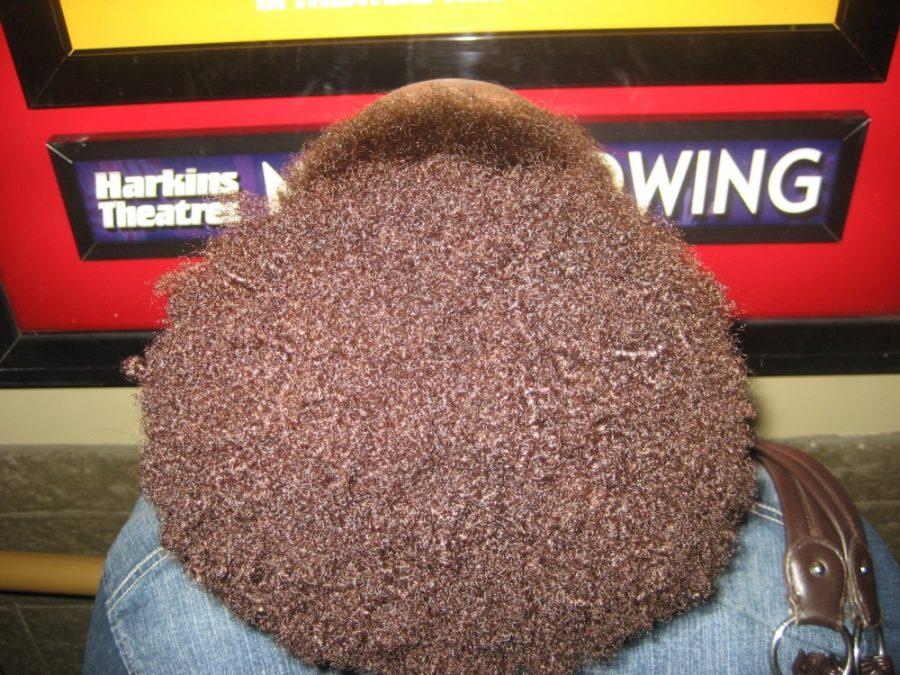“”The lighter, the brighter, the better.”” It’s a motto that summarizes a beauty ideal some women aim to achieve with their hair.
The motto comes from the movie “”Good Hair,”” which hit Tucson’s Harkins Spectrum 18 Theatre Oct. 23. Narrated by comedian Chris Rock, this entertaining documentary was developed in response to a question his daughter asked him: “”Daddy, do I have good hair?””
Having “”good hair”” is said to be the ideal, and the documentary does a great job of covering the breadth of issues surrounding the attainment of good hair. Rock takes a light, humorous approach to the sensitive issue. As Maya Angelou says in the movie, “”Hair is a woman’s glory.”” And having or not having “”good hair”” can be a big deal, specifically with black women, as it can impact them socially, politically, economically, emotionally and professionally. “”Good Hair”” discusses the steps taken to have good hair, whether it has to be chemically altered via a relaxer, or whether you can look like you have good hair with the addition of wigs, weaves, ponytails and/or braids.
Guest commentary by actors, actresses, comedians and political figures such as Nia Long, Melyssa Ford, Raven-Symoné and the “”Dalai Lama of Relaxer,”” Al Sharpton, are an apt supplement to the documentary. Not only that, but Rock also gained input from people in barbershops, beauty salons, the hair industry and more. So if you have friends who are of African descent and you wonder to yourself, “”How did your hair switch styles so fast?”” this is a good movie to help explain it to you.
By now you’re wondering: what is “”good hair?””
Good hair is generally defined as hair that is silky in texture, able to achieve long lengths, and smooth enough to be combed through with just the hand. European and/or Asian hair is usually described as the “”good hair”” ideal that some women strive for, while Afrocentric hair (hair that is very tightly coiled) is not as desirable, as mentioned in the movie.
But all types of hair can be “”good hair.”” Dionna Grisette, a licensed cosmetologist and hairstylist at Posse’s Styling Emporium, was in the audience with me. She explained her concept of good hair: “”Good hair is defined by how well you manage your hair, how well you keep it clean. Good hair is not determined by the texture of your hair.””
According to Grisette, hair grows from three types of follicles. Round follicles typically allow straight hair to grow. Oval follicles lead to a curly or wavy texture and elliptical (narrow) follicles lead to the growth of tightly coiled or even coarse hair. “”The smaller the hair follicles, the more coarse the hair is,”” Grisette said. “”And the curlier the texture of the hair the more moisture is needed to protect it.””
Though your hair follicles determine your hair texture, your hair can still be properly maintained no matter what texture it is.
“”Good Hair”” did a great job of showing the danger of chemical hair relaxers, the active ingredient in which is sodium hydroxide. Relaxers are used to “”relax”” the texture of the hair from coil-y to straight, but with improper or too-frequent use, the sodium hydroxide can lead to burns on the scalp.
The movie showed girls as young as four years old getting a relaxer. “”The girls at the shop have reservations (about) relaxing children under seven years old because the hair follicles aren’t developed,”” Grisette said. “”When you put the relaxer on it and it’s in the developing process, the chemicals can change the hair follicles which can change the texture of the hair. It can affect the dryness of the hair.””
Dryness, especially in Arizona, can lead to breakage of the hair. However, with the dangers of using relaxers, the documentary lacked a discussion on the convenience of getting a relaxer or adding a weave for some black women. Management of Afrocentric hair for some can simply be time-consuming, especially for those parents who have to fix their daughters’ hair on a daily basis before school.
But as a professional hairstylist who has applied relaxers to young girls in the past, Grisette is careful: “”I was extra, extra cautious to rinse to make sure I got all of the relaxer out of the hair. After watching the movie I can say that I’m proud to do a majority of natural (no use of harsh chemicals) hairstyles. I would feel guilty now if I didn’t tell (clients) about the harsh chemicals in the relaxer.””
And if you don’t want a relaxer? You can “”put a weave in it.”” In the film, Rock visits hair industry hubs in the U.S. and even travels to India, where much of the human hair used for weaves is sold to U.S. beauty supply stores. The selling price of this hair can reach thousands of dollars.
According to the movie, 12 percent of the U.S. population is black, but black people buy 80 percent of the hair and hair products. In fact, one of the more interesting parts of the movie is the behind-the-scenes-style showcase of Indian women shaving their heads to sacrifice their hair under religious contexts.
As with many commodities, crime follows not too far behind. The movie describes hair stolen right off an Indian woman’s head for money. The film also shows how the hair is processed, cleaned and separated into bundles before distribution to sell. Yet the economic implications of the hair industry from a supply standpoint were not fully discussed. What percentage of money from the hair that’s sacrificed, goes back to India? The documentary took us through poverty-stricken areas in India, subtly implying the need for economic relief and making you wonder how Indian women and their communities benefit from a quest for the beauty ideal.
Hair shows, where leading hairstylists can showcase their work, are one benefit of the booming hair industry. Stylists are shown in the movie preparing for the Bronner Brothers Hair Show competition. The competition is wildly dramatic, and conjures images of Vegas-style production, complete with lighting, stage props and color.
While the hair show’s inclusion in the documentary was entertaining, there was little discussion among these particular experts about their opinions regarding good hair. It’s probable that the reason the hair show was highlighted was to show the choreography of creativity that goes into the art of styling black hair.
UA alumna Dominique Shanks, 24, who wears a curly perm, saw “”Good Hair”” and agrees that “”we (black women) can wave, straighten, perm our hair. Whereas other people can cut and dye their hair. Black women have more options to transform their hair.”” So maybe good hair can also be defined as having versatility in styling.
“”People spend more money on what they think is important,”” Shanks said. “”Some people spend money on their clothes or cars, and some choose to spend more on their hair. I personally, however, don’t think thousands of dollars should be spent on hair.””
Monica Goings, a biology senior, thought the movie should have focused more “”on why black women have their viewpoint on good hair and how it is an issue for both men and women.””
All hair is good hair, whether is grows out kinky or straight. The key, it seems, is to maintain it, but also come to grips with loving the total body. Chris Rock would agree, as he promises in the movie to love his daughters for their hair, whatever shape or form it may take, but moreso for their minds, bodies and spirits.









